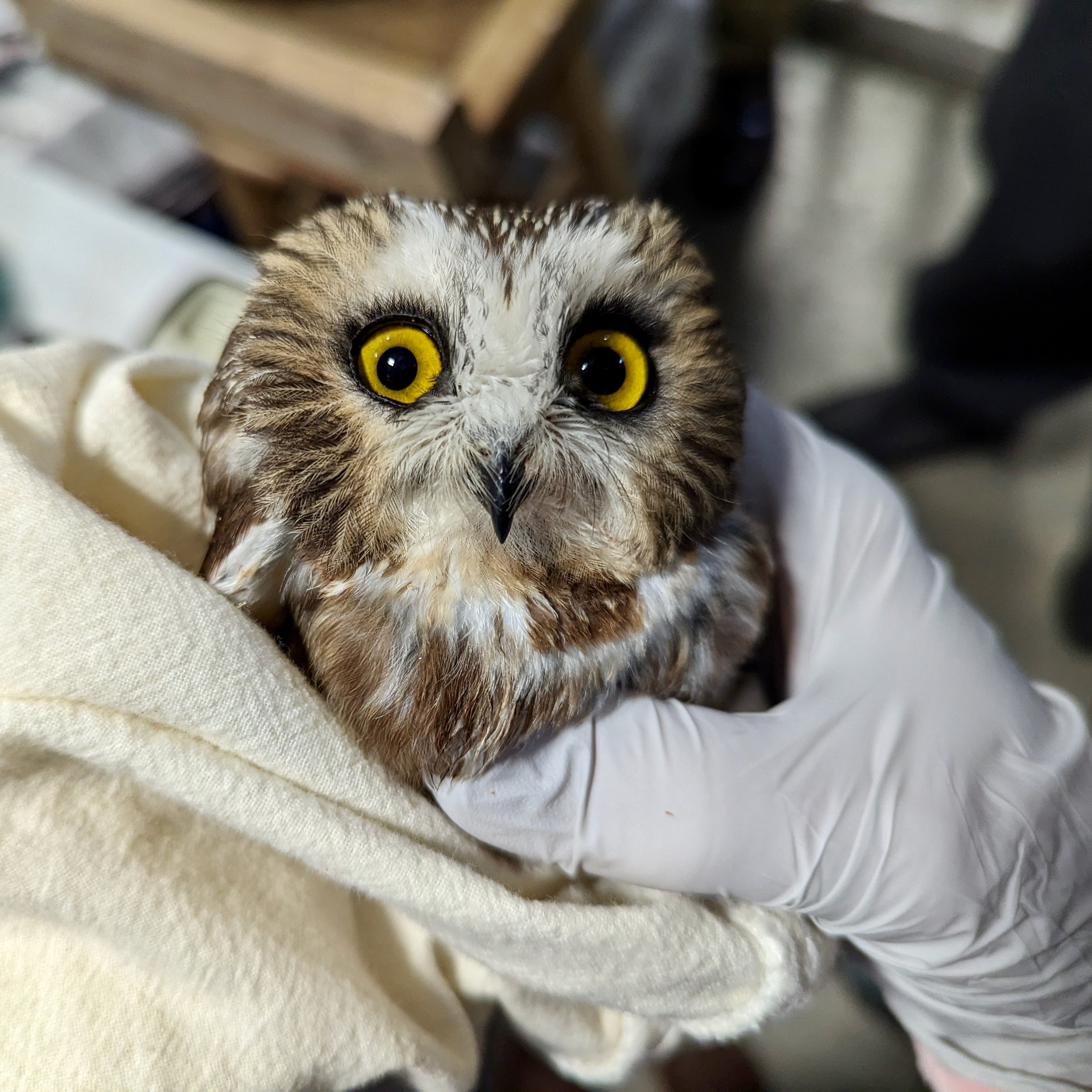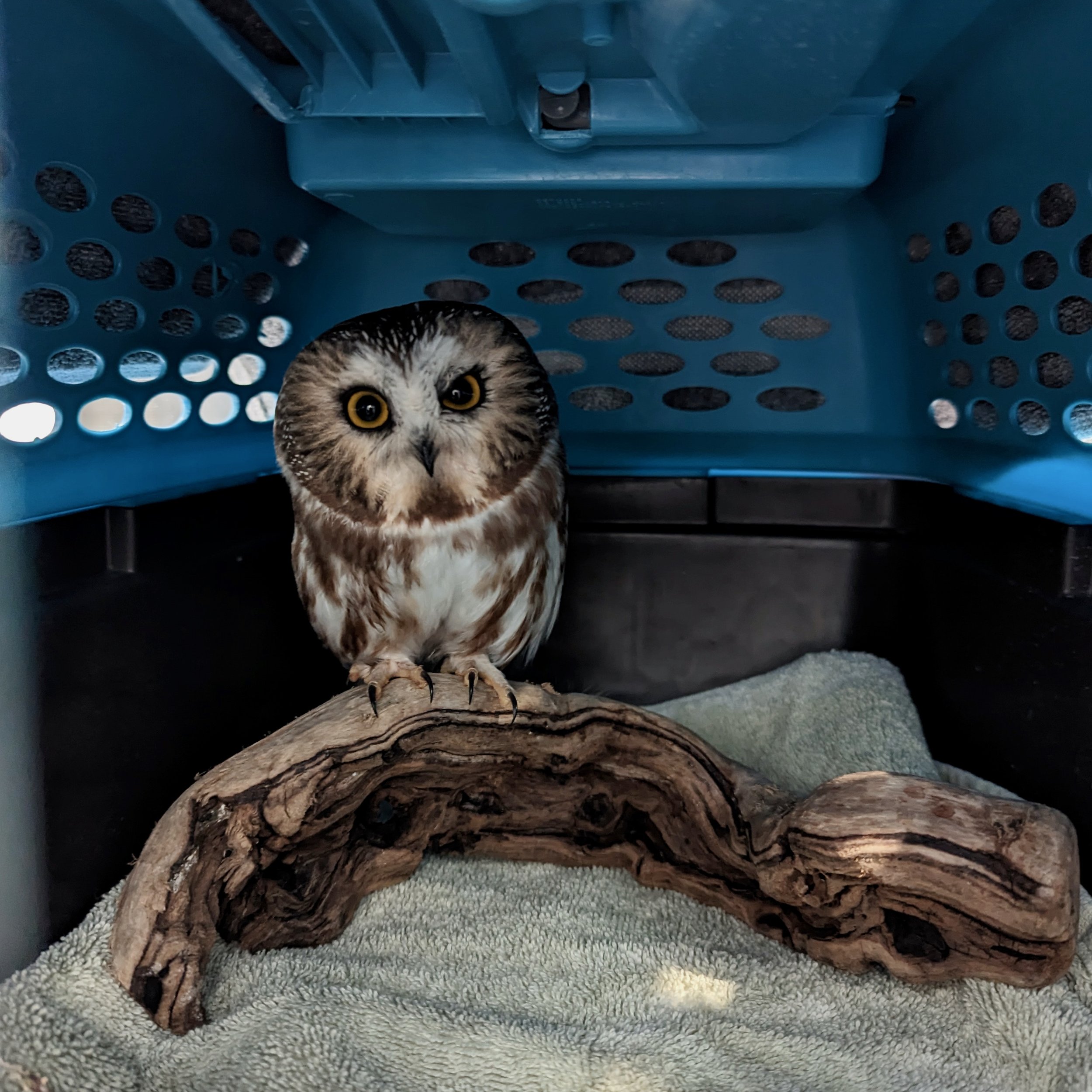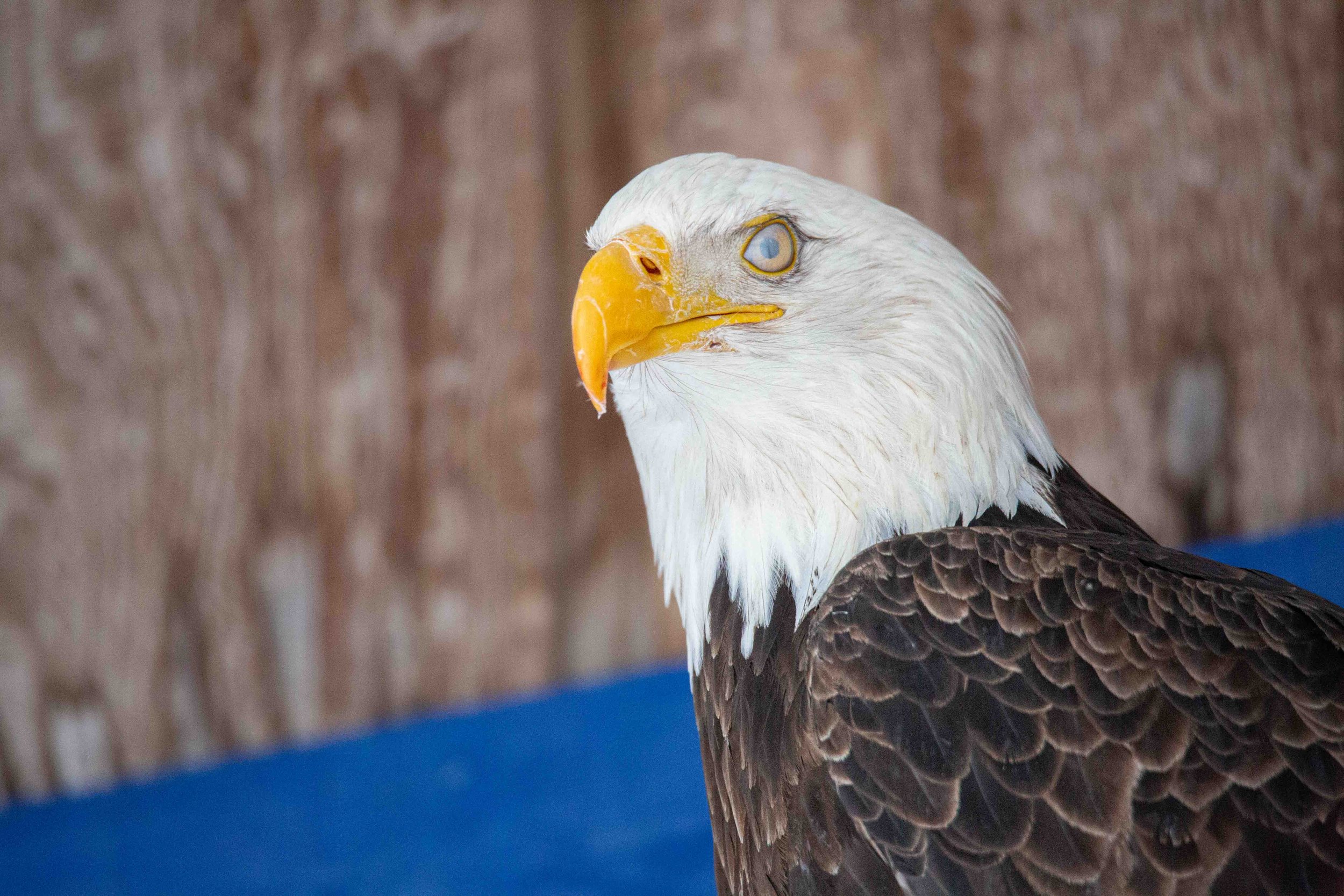We received a call from a Good Samaritan about an unusual patient at Providence Hospital. They weren't sure if he wanted to go inside or was just passing the time and admiring the landscaping. They told us he was about 8 inches tall, had yellow eyes, and mottled cinnamon, brown, and red feathers. Feathers? Yes, feathers. This patient was a Northern Saw-whet Owl that refused to leave the safety of the bush he was perched in, despite being surrounded by a small crowd.
As the group stood around the owl, wondering how to help, a woman approached to see what was happening. Because she had volunteered for Bird TLC, she could assess the situation and knew how what to do for this tiny owl. She instructed an onlooker to get a box and towel. After safely securing the owl in the box, she contacted us. A rehabilitation volunteer hurried to the hospital and brought the owl to the clinic.
The owl was unusually quiet and was squinting one eye, so Bird TLC veterinarians suspected their new patient had suffered head trauma.
We treated him with pain medication and eye drops and placed him in a quiet, dark enclosure.
In the wild, Northern Saw-whet Owls eat primarily small mammals so we fed him pieces of rat. Initially, we used tongs to feed him to ensure he would eat and maintain weight.
Once the owl had recuperated and shown us that he could eat independently and all signs of head trauma had resolved, we coordinated his release.
Dr. Karen scouted for a release site close to where the owl was found. We wanted to return him to the territory where he had likely been raised the previous year. The wooded area also met the preferences of Northern Saw-whet Owls. These owls like to forage in a forest with an open understory, nest in deciduous trees, and roost in conifers.
Other staff coordinated with the family who had won an owl release at a recent auction. They were particularly excited because their young sons, especially their 6-year-old, are fascinated by owls.
Within 48 hours of determining the owl was ready for release, everyone had gathered on a Saturday evening, ready to set the owl free.
Dr. Karen instructed the young boys on how to help with the release. They held the carrier as still as possible and patiently waited for the owl to fly out. With some encouragement from Dr. Karen, the owl flew from the carrier, landed on a tree in front of the group, watched us for a few moments, and then flew off into the woods.
We loved sharing this special moment with this family of owl admirers. Their mother told us, “The owl release was an absolutely amazing experience for our family! My sons talked about Northern Saw-whets for the rest of the weekend, and my middle son, the owl-enthusiast, told me that the Northern Saw-whet is now his favorite owl. Many thanks to you and your team for making it such a memorable moment for us.”
Releasing our rehabilitated Northern Saw-whet Owl.
You can read more about the biology of Northern Saw-whets and find tips for identification here.
Stories like this our possible because of your support.
Thank you.
How to Determine a Bird's Age
Determining the age of a bird can be tricky, but with the help of UV light Avian Care Director Dr. Karen Higgs and Rehabilitation Assistant Katie Thorman determined that this owl had hatched just last year. Under UV light, porphyrin, an organic compound in newly molted feathers, becomes fluorescent, allowing the differentiation between one-year-old and two-year-old feathers.






